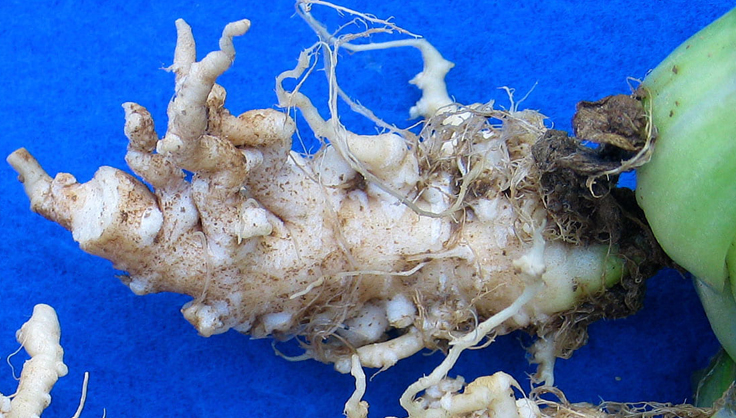Club Root
 Margaret Tuttle McGrath, Cornell University
Margaret Tuttle McGrath, Cornell UniversityCabbage-family plants that contract this fungal disease will often wilt during the heat of the day and recover at night. Older leaves then begin to yellow and droop.
Uproot such plants and you?ll find that the roots are swollen and distorted. Badly infected plants stop developing and may eventually die. Cabbage, Chinese cabbage and Brussels sprouts are most susceptible to club root; mustard, radishes and turnips are most resistant. Warm, wet weather encourages the spread of the disease by splashing and windblown raindrops. It is also spread by overhead irrigation and on contaminated tools. Once established in a garden, club root is difficult to control, because the fungus can survive in soil for more than 10 years.
Prevention and Control of Club Root
- Protect vulnerable crops by starting with certified disease-free seeds and transplants.
- Keep the soil pH at or above 7.2 to help discourage the disease.
- Set up as long a rotation of cabbage-family crops as possible. Rotations shorter than 5 years may have little effectiveness.
- Plant a cover crop of rye grass in early spring. Dig it into the soil two to three weeks after it germinates. Rye can help inhibit the club root fungus.
- At the end of the growing season, clean up and destroy infected plants.
Print this Article:
Get the Dirt
Stay up to date on new articles and advice. Please fill out the information below.
